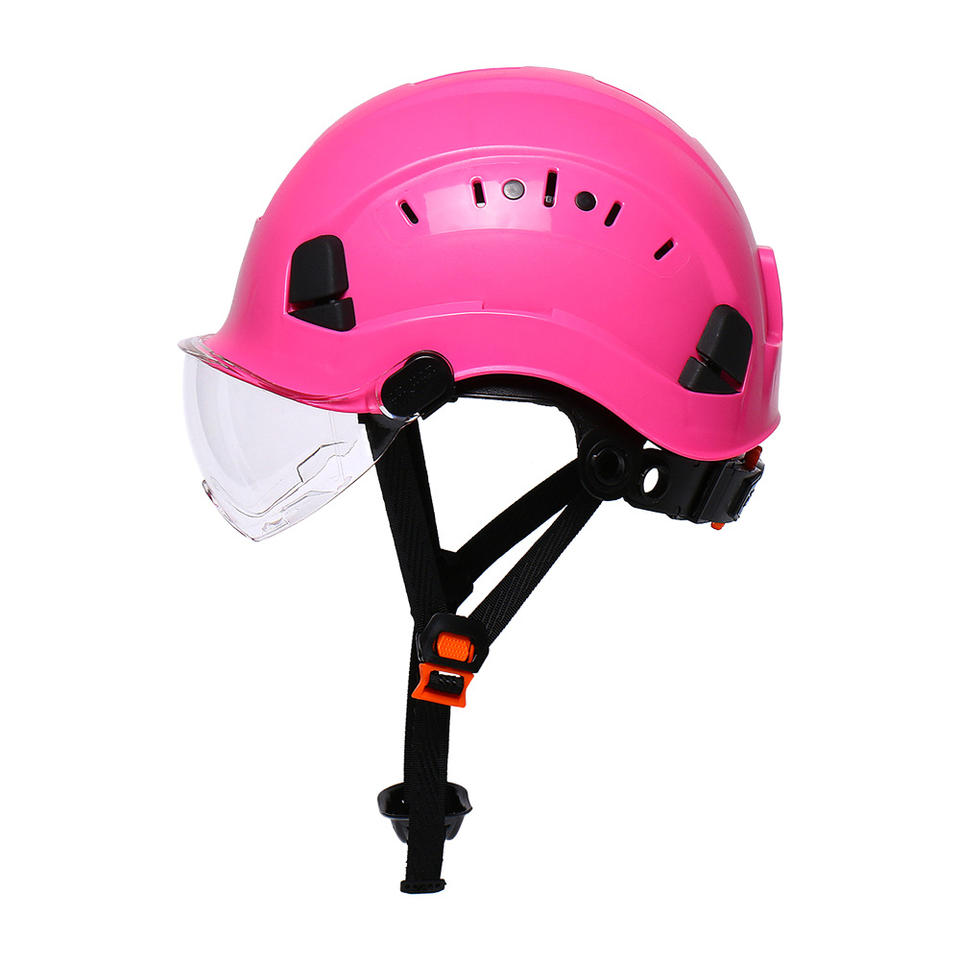Safety Helmet with Visor: Anti-Fog, ANSI/EN Certified?
ABS Material Engineering Safety Helmets with Worker Visor — notes from the field
On busy job sites, one detail stands out lately: face protection built right into the helmet. If you’re scanning for a reliable safety helmet with visor, you’re not alone—demand is rising across construction, utilities, and mining. I’ve tried a few, quizzed supervisors, and compared lab sheets; the ABS Material Engineering Safety Helmets with Worker Visor from Hebei, China, keep coming up in conversation, for good reason.

Why integrated visors are trending
Integrated visors reduce fiddling with separate face shields, which—let’s be honest—often get “lost” or left in the gang box. When the visor rides with the shell, workers actually use it. That translates to fewer eye/face injuries and better compliance. Many customers say the visor-down habit becomes second nature after a week.

Key specifications (real-world friendly)
| Shell Material | ABS (impact-resistant, lightweight) |
| Visor | Clear, typically polycarbonate (anti-scratch/anti-fog options vary by batch) |
| Suspension | 6-point suspend; adjustable 52–63 cm |
| Weight | ≈700 g (real-world use may vary with accessories) |
| Colors | Red, blue, white, yellow, orange, pink, green, camouflage |
| Standards | Designed to meet EN 397; ANSI/ISEA Z89.1 (check batch certification) |
| Packaging | 11.81 × 10.24 × 8.66 inches (per box) |
| Service Life | Around 3–5 years; replace earlier with UV wear, impact, or cracks |

How it’s made and tested
Process flow, in short: ABS pellets → injection molding of shell → cooling/deflash → visor cutting and coating (often PC, anti-scratch/anti-fog options) → 6-point suspension assembly → QA checks → impact/penetration testing → labeling and packaging. The better plants run UV aging tests and pull random samples for drop tests.
- Impact attenuation (EN 397 method): peak force typically ≈3–5 kN under top impact.
- Penetration: striker does not touch headform at prescribed drop height.
- Flammability: shell self-extinguishing per standard criteria.
- Optional electrical class (ANSI/ISEA Z89.1): verify Class G/E ratings on certificate.
In field feedback, crews like the quick flip-up visor and the stable safety helmet with visor fit from the 6-point suspend. Actually, the comfort is what keeps it on heads during long shifts.

Where it works best
Construction, working aloft, security protection details, mining, general industrial tasks—anywhere debris, splashes, or wind-blown grit attack eyes. Supervisors tell me compliance ticks up when the safety helmet with visor is standard issue.
Vendor snapshot (quick compare)
| Vendor | Certs (typical) | MOQ | Lead Time | Customization | Price Range |
|---|---|---|---|---|---|
| Good Safety Helmet (Hebei) | EN 397, ANSI Z89.1 (check lot) | ≈100–300 | ≈7–15 days | Logo, color, visor options | Mid, value-focused |
| Vendor A (EU) | EN 397, EN 50365 | ≈50–100 | ≈10–20 days | Broad palette, branding | Higher |
| Vendor B (US) | ANSI Z89.1 | ≈100 | ≈5–12 days | Decals, visor tints | Mid–High |

Customization, capacity, and logistics
Logos? Yes—customized logo accepted. Colors? A bunch, including camouflage (crews oddly love that). Daily supply ability is noted at 5,000 pieces, which helps bigger rollouts. Origin: 26 YongPing Road, Northern Industrial Base, Hengshui City, Hebei, China. Packaging per box is 11.81 × 10.24 × 8.66 inches, neat for container111 stacking.
Quick case study
A mid-size scaffolding contractor (200+ techs) switched to the safety helmet with visor last spring. Over three months, they reported a 36% drop in minor eye irritation cases and near-misses tied to windborne grit. Not magic—just fewer excuses to skip eye protection.

Final word
If you want fewer gaps in PPE usage—and better comfort—the integrated visor design is a smart, frankly overdue move. Just confirm the certificate set (EN 397/ANSI Z89.1), check visor coatings, and set a replacement policy based on UV exposure and impacts.
Authoritative sources
- EN 397: Industrial safety helmets. CEN. https://standards.cen.eu
- ANSI/ISEA Z89.1-2014 (or latest): Industrial Head Protection. https://shop.ansi.org
- OSHA Head Protection (29 CFR 1910.135). https://www.osha.gov/head-protection
- NIOSH Workplace Safety & Health Topics: Head Protection. https://www.cdc.gov/niosh/topics/headprotection
- HSE Head Protection Guidance (UK). https://www.hse.gov.uk/toolbox/ppe/head.htm
-
Essential Guide to Safety Helmets for the Oil and Gas Industry
NewsNov.24,2025
-
Essential Guide to Safety Helmet for Baby – Protect Little Explorers with Confidence
NewsNov.24,2025
-
Comprehensive Guide to Safety Helmet Factory – Global Insights & Innovations
NewsNov.23,2025
-
Rockman Safety Helmet: Ultimate Industrial Head Protection Guide
NewsNov.23,2025
-
Race Safety Helmet – Essential Protection for Motorsport Champions
NewsNov.22,2025
-
Offshore Safety Helmet Guide: Protecting Workers in Harsh Marine Environments
NewsNov.22,2025
